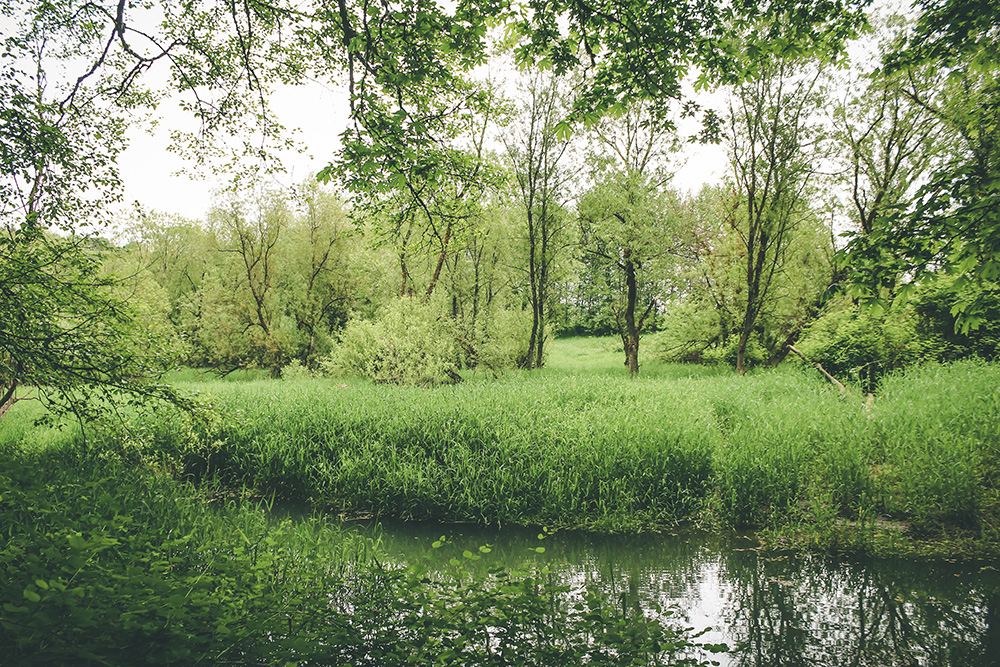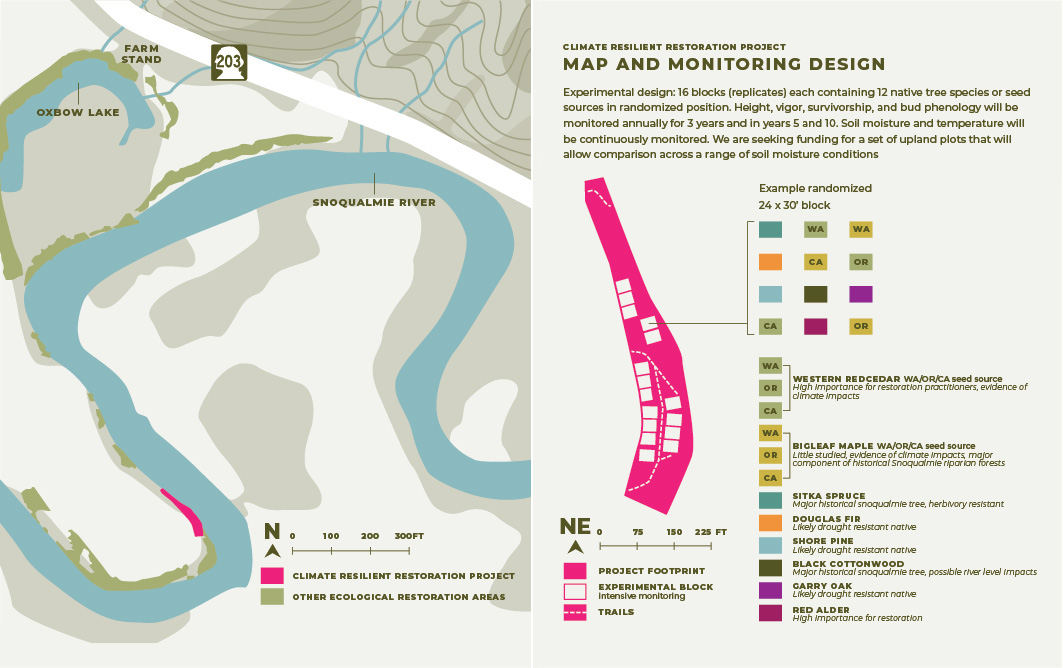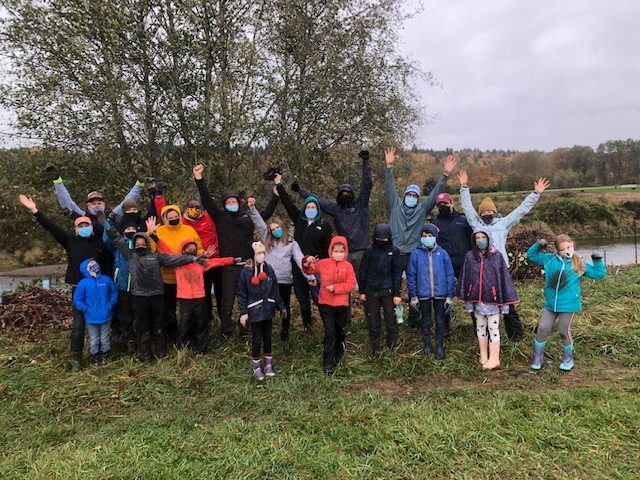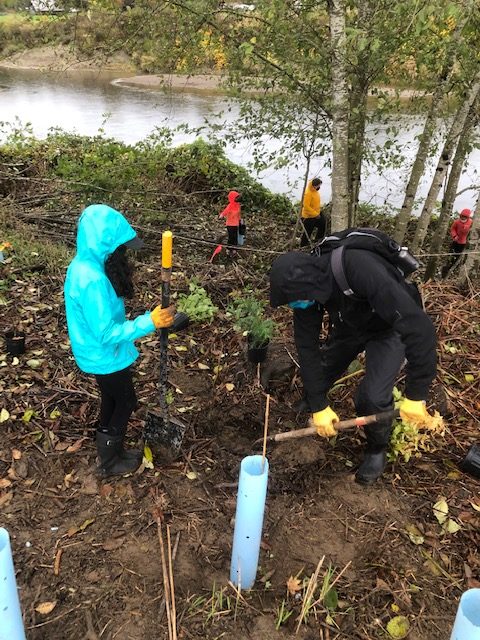Assisted tree migration: Planting for climate resilience
Part 1 of a Series on Assisted Tree Migration. Read part 2 >> Read part 3>>
What is tree migration?
When you think of migration, your brain might immediately think of birds, butterflies, whales on the move, and even humans moving from one city to another. But there is a kind of migration you might have not even realize is happening around you: tree migration.
As large as trees are, it might be hard to imagine them moving from one place to another. But, like animals, plants respond to shifts in the environment and move, although very slowly, for future generations to survive and thrive as conditions change.

Though an individual tree is fixed to its location, tree populations migrate through movements of their seeds and pollen, allowing their seedlings to grow into new areas where the conditions, especially the climate, might be more favorable and increase the trees’ chances of survival. Unfortunately, research shows that rapidly increasing temperatures and severe summer droughts caused by global warming will likely reduce favorable growing conditions for many native Pacific Northwest trees and plants. Scientists have confirmed that many native plant populations are migrating north, seeking cooler temperatures and wetter summers, but some scientists worry that they can’t migrate as quickly as conditions are changing.
Whether or not you can see it yet in your day-to-day activities, plants, animals, and all living communities are being challenged by climate change as we speak. Understanding the importance of a resilient, climate-ready landscape is critical to our work at Oxbow — we must learn how these variables will affect native species and their ability to adapt to new environmental conditions.
Assisted tree migration
As part of our ongoing restoration projects, Oxbow’s conservation team and volunteers continue to remove invasive plants in riparian areas along the Snoqualmie River, preparing a favorable environment for planting 3,000 new native trees and shrubs. When deciding what to plant, our staff must imagine the future and consider the likelihood of more high-heat events like the one we had this past summer. We must ask: What should we plant to ensure this native ecosystem will survive for future generations?

Our conservation team is beginning a fascinating restoration project. They will plant, monitor, and track eight different species of trees to understand which are better adapted to thrive in the valley long-term. Additionally, they will assess one of the ways that our Pacific Northwest trees may manage to thrive despite climate change: population assisted migration.
“Assisted migration” is the term for moving seeds or seedlings of a plant to a new, more suitable environment or an environment that will be more suitable in the future. For some, this term conjures up images of planting coastal redwoods and other tropical or non-native species in our Pacific Northwest parks and forests. What Oxbow is planning, and what many ecologists are considering as one tool to help forests adjust to climate change, is a little more nuanced: tapping into the natural genetic diversity of our native species. Many of native species grow across a wide range of environments. For instance, Western Red Cedar, one of the species we will be focusing on, grows as far north as Alaska and as far south as northern California, and in each area the trees have become adapted to the particular environment where they are growing.
The project will establish 1.2 acres of potentially climate-resilient native riparian forest along the Snoqualmie River. Our conservation team, headed by Matt Distler, Ph.D, is receiving tree seedlings from central Oregon and seeds from Southwest Oregon, where our native maple and cedar are already experiencing hotter, drier summers. We will help these tree populations migrate north via assisted population migration with the hope that they’ll survive our current conditions and better thrive in the conditions of increased heat and drought, projected for the coming decades. In turn, these new trees could survive long into the future and provide shelter, shade, and food sources for wildlife.

As we restore our native landscapes, we must plan for the future to give ourselves, our habitats, and our ecosystems the best chances for thriving in the unknown.
This project is only just beginning, and we are excited to share more with you as it progresses. We hope insights from this project can help support everyone who wants native trees in their yard and on the lands they care for. We will also be sharing our findings through a regional science collaborative, the Forest Adaptation Network. Once the seeds of these new trees arrive in the new year, our team will start them growing in Oxbow’s Native Plant Nursery. Be sure to stay tuned to meet the plant babies that will become a future forest and provide us with valuable insights into our beautiful and ever-changing Pacific Northwest ecosystem for years to come.
Continue reading: Part 2 >>



Thank you to all the volunteers who have, over the years, helped us maintain and restore Oxbow’s riparian areas — your work is such an important part of our conservation efforts. Special thanks to Matt Distler, Jess Eskelsen and Ali Lakehart for their contributions of wisdom, insight, and patience in the writing of this article.
